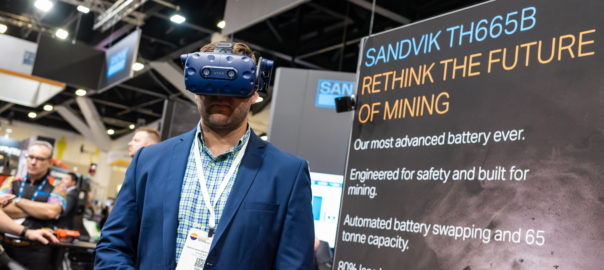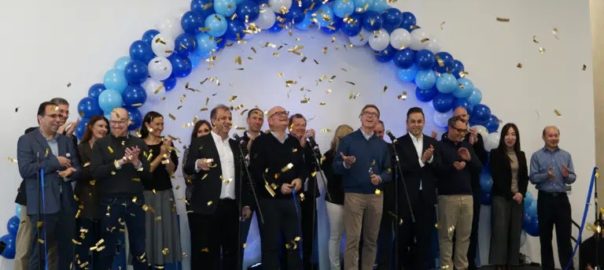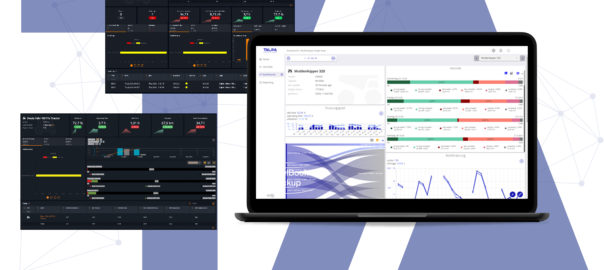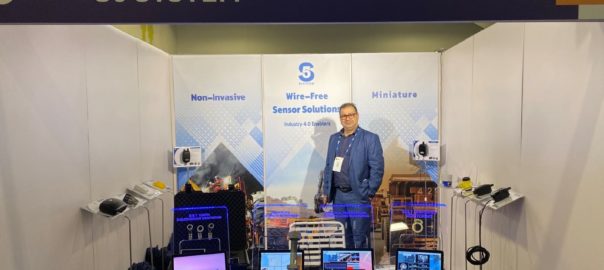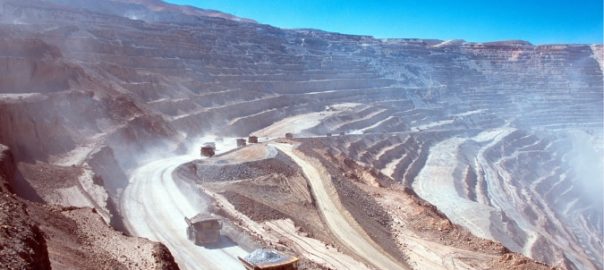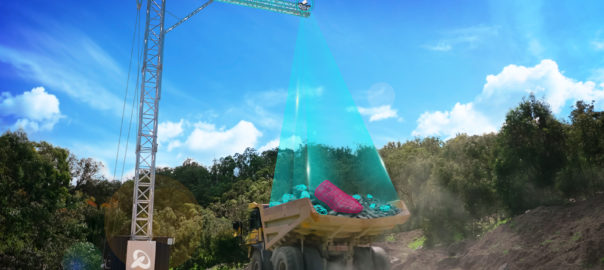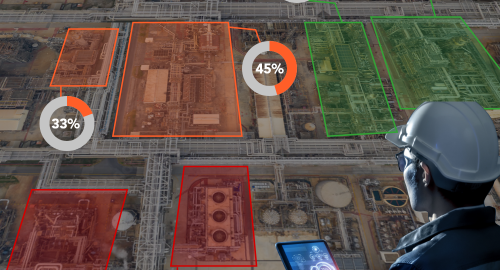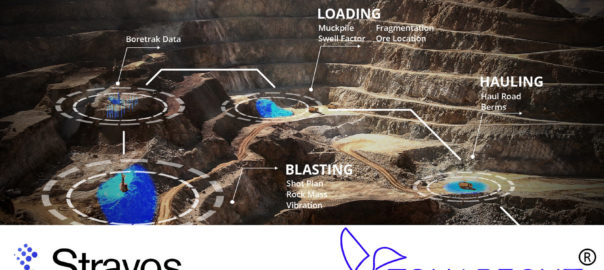The mining industry has always been at the forefront of technological progress. From the steam engine enabling coal mining to be profitable, to advanced drilling techniques, innovation has played a pivotal role in improving productivity and efficiency, the organisers of IMARC 2023 say.
In recent years, the adoption of artificial intelligence (AI) has emerged as a gamechanger for mining, allowing for more efficient exploration, taking automation to new levels, generating greater yields, dramatically improving safety, and maximising extraction, maintenance and operational performance.
Improving mine site efficiency
AI-powered systems are being rolled out across mining operations to enhance resource estimation accuracy. By examining geological data patterns and incorporating historical mining data, AI algorithms can provide more precise estimates of mineral reserves. This helps mining companies make informed decisions regarding investment, production planning and resource allocation, ultimately maximising the economic potential of mining projects.
Mark O’Brien, General Manager for Digital Technology & Innovation at CITIC Pacific Mining, notes that AI is already having a sizeable impact within the mining industry.
“In South Australia, mining companies already have access to a massive library of core samples, which are literally centuries of data,” he said. “Using AI-enabled algorithms, we’re now finding resources that were originally missed. The process is relatively similar to the advancement in DNA technology that has allowed criminologists to review and solve old cases.”
Farzi Yusufali, co-Founder of Stratum AI, a company which provides bespoke, AI-driven solutions to help mine sites increase their yields with lower risk, says: “One of our clients noted that their yield predictions in terms of what was pulled out would swing 30% each way on quarter-on-quarter. If you are processing millions of tonnes of copper, that’s a problem. Now with the application of our AI system we found there has been 58% accuracy increase in predictions quarter-on-quarter for the last couple of years.”
AI also offers immense potential in streamlining mining operations and optimising asset management. Through the use of Internet of Things (IoT) devices and sensors, real-time data collection becomes feasible, enabling mining companies to monitor equipment performance, evaluate operational metrics and identify potential bottlenecks. AI algorithms can then process this data, generating valuable insights and predictive models that enhance decision making and prevent unplanned downtime.
Furthermore, AI-powered automation systems can significantly improve efficiency and safety in mining operations. Autonomous vehicles and machinery equipped with AI algorithms can navigate complex terrains, optimise routes and execute tasks with precision. This minimises human error, reduces the risk of accidents and enhances worker safety. Additionally, AI-driven predictive maintenance systems can monitor equipment health, detect anomalies and schedule maintenance activities proactively, maximising uptime and extending the lifespan of mining assets.
AI technology also holds promise in promoting environmental stewardship and sustainability in the mining industry. For instance, AI algorithms can optimise the mine planning process, considering environmental factors such as land reclamation and habitat preservation.
Alex de Jager, the Managing Director of Conundrum Australia, says: “Our technologies focus specifically on creating efficiencies in operations and production, the absolute benefit of all that is not only in the profitability, but it’s in making the mines greener. If you’ve been able to extract more material from what you have mined, you can dramatically lower your electricity and water usage thanks to AI systems.”
de Jager says sensors and remote sensing technologies, combined with AI algorithms, enable continuous monitoring of air and water quality, allowing rapid identification and response to any environmental disturbances. Such monitoring systems help ensure compliance with environmental regulations and promote sustainable resource extraction practices.
Bridging the skills gap
Gavin Lind, CEO of the Australian Minerals & Energy Skills Alliance (AUSMESA), says the rapid advancement of AI presents unparalleled opportunities for the nation’s industries, including mining. For example, he says AI presents opportunities to transform how the most basic tasks are undertaken to make them quicker, safer and more efficient.
“The core function of a mechanic, which is to fix and repair a vehicle, does not change with the adoption of AI,” he said. “With AI, however, a mechanic may not be needed in a garage on a mine site, but can be stationed at a remote operations centre thousands of kilometres away.”
Encouragingly, the mining industry in Australia has already taken some steps to develop digital skills and Lind says AI is also helping address one of the industry’s biggest challenges: attracting the workforce needed to meet global demand. He says mining is at a disadvantage compared with typical city-based employers, as potential recruits can’t just go down to their local mine to see what it’s like firsthand.
He said: “In countries where mining operations are remote, AI can allow us to tell that story from capital cities with the assistance of virtual reality to attract a new generation of workers to the industry.”
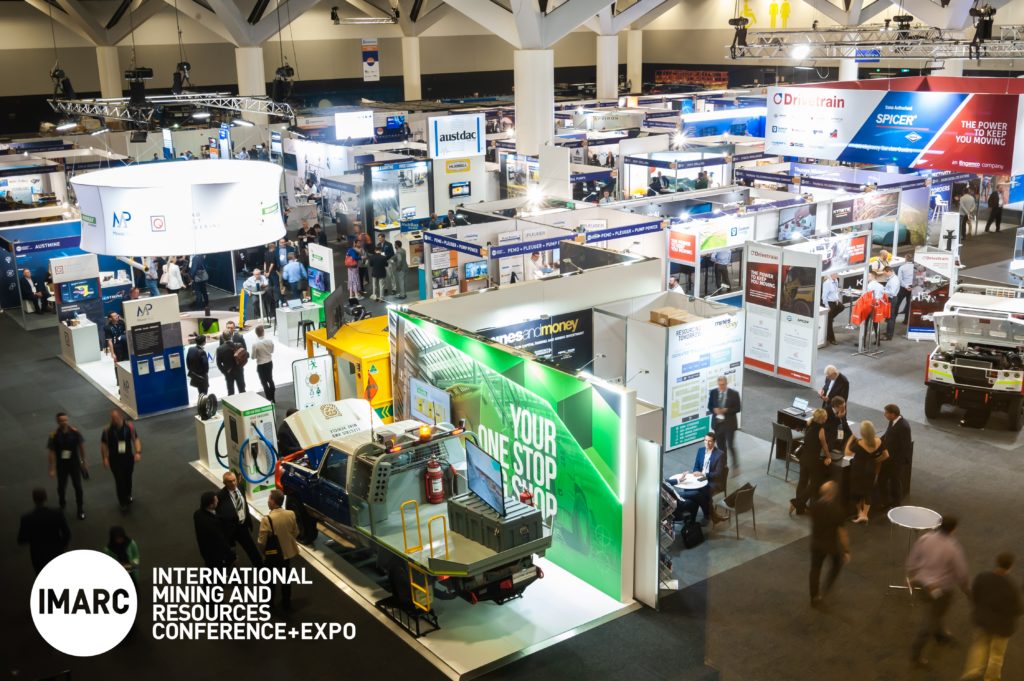
Is excessive risk aversion stalling progress?
There is no doubt the industry is inherently hazardous, and risk management is a priority to safeguard both people and the environment.
However, de Jager believes being excessively risk-averse can hinder progress and impede opportunities for growth. In this context, he says, countries with more progressive attitudes towards embracing innovation have surged ahead in AI adoption, gaining a competitive edge in efficiency and cost-effectiveness.
Conundrum Australia creates machine-learning software for the digital transformation of the metals and mining industry and de Jager believes Australia’s reputation for rigorous regulation means it can be a big challenge for a new innovator coming into the Australian market. Conundrum will be presenting at the 2023 International Mining and Resources Conference (IMARC) in Sydney later this year.
de Jager says: “The upside to this risk averseness is that no matter what industry you point to in Australia, the laws that govern that industry are incredibly tight and well thought out, well designed and well developed. Australia is a very innovative country, but it is also incredibly risk averse, and this can be a hurdle to market.”
He believes that by maintaining a low threshold to risk, Australia risks falling behind in the global race towards AI-driven mining solutions. Without embracing new technologies, mining companies in the country may face challenges in accurately estimating resources, optimising extraction processes and mitigating environmental impacts. Moreover, they may fail to capitalise on AI’s potential to create safer and more sustainable mining practices.
Trends in AI
When it comes to trends in AI, one of the most significant applications in mining lies in exploration and resource estimation. Traditional exploration methods can be time-consuming and costly, often yielding limited results. However, as Yusufali says, AI-driven technologies such as machine-learning algorithms and data analytics have transformed the exploration process.
She says there is a range of tools now available to analyse vast volumes of geological data, including historical drilling records, satellite imagery and sensor data, to identify promising areas for mineral deposits.
“With AI, geologists can optimise their decision-making by rapidly identifying potential mining sites, reducing the risk of exploratory failures, and saving valuable time and resources,” she says.
“AI in the exploration process can help mining companies find minerals and resources faster and more efficiently, by identifying patterns and anomalies in the data that might otherwise be missed by human geologists.”
International Mining is a media sponsor of IMARC 2023







